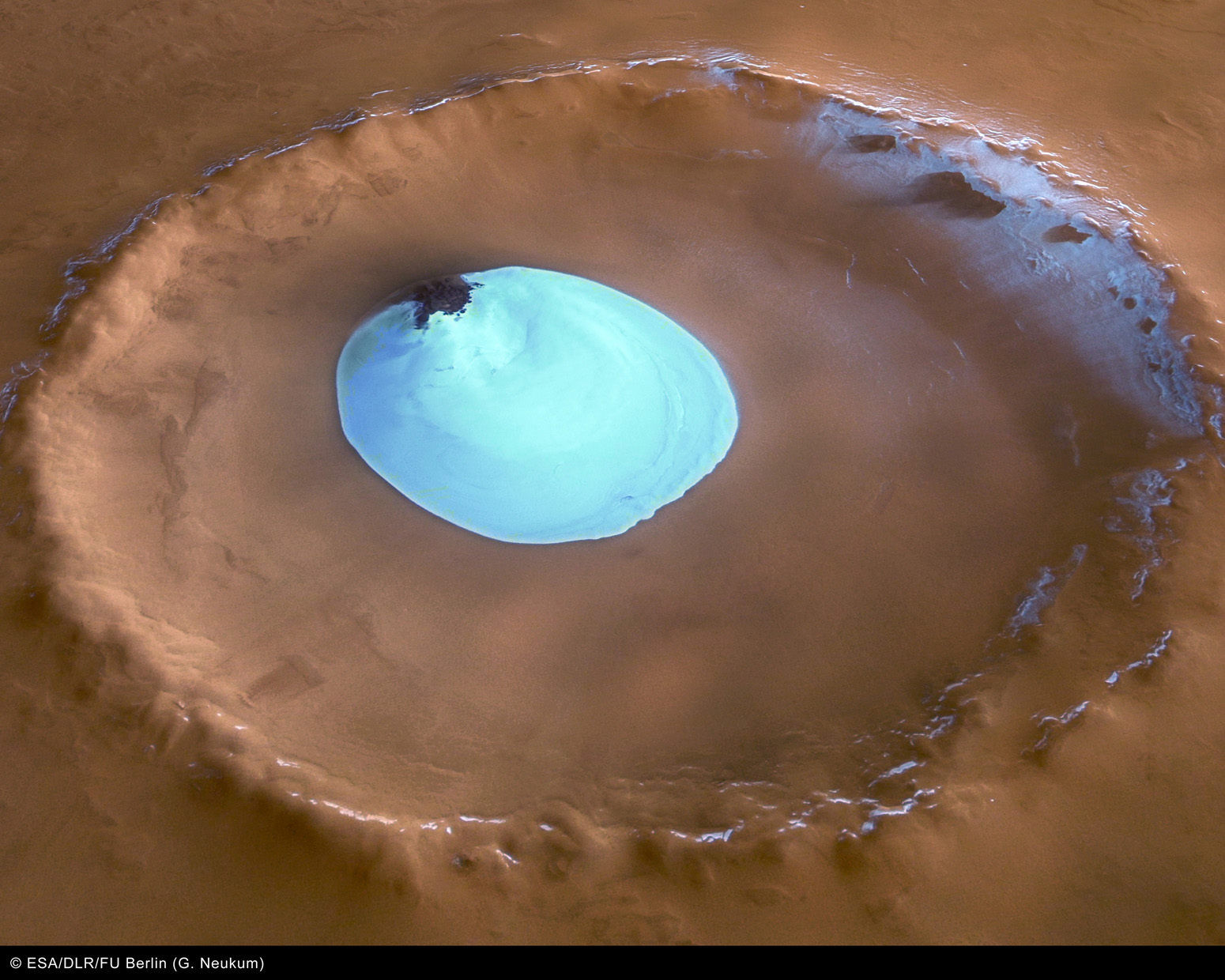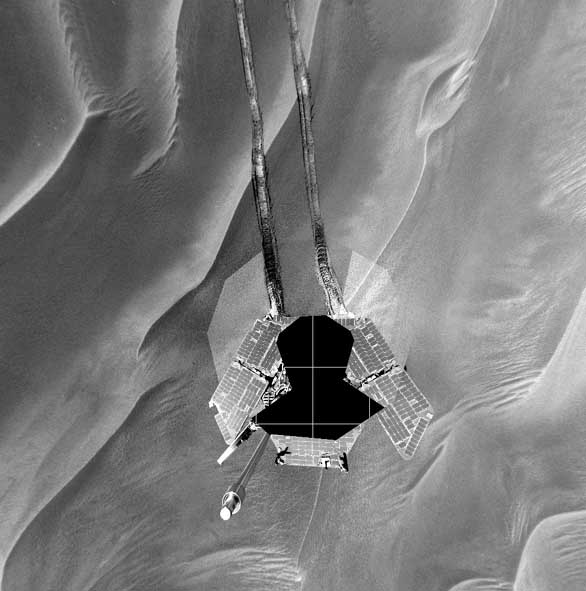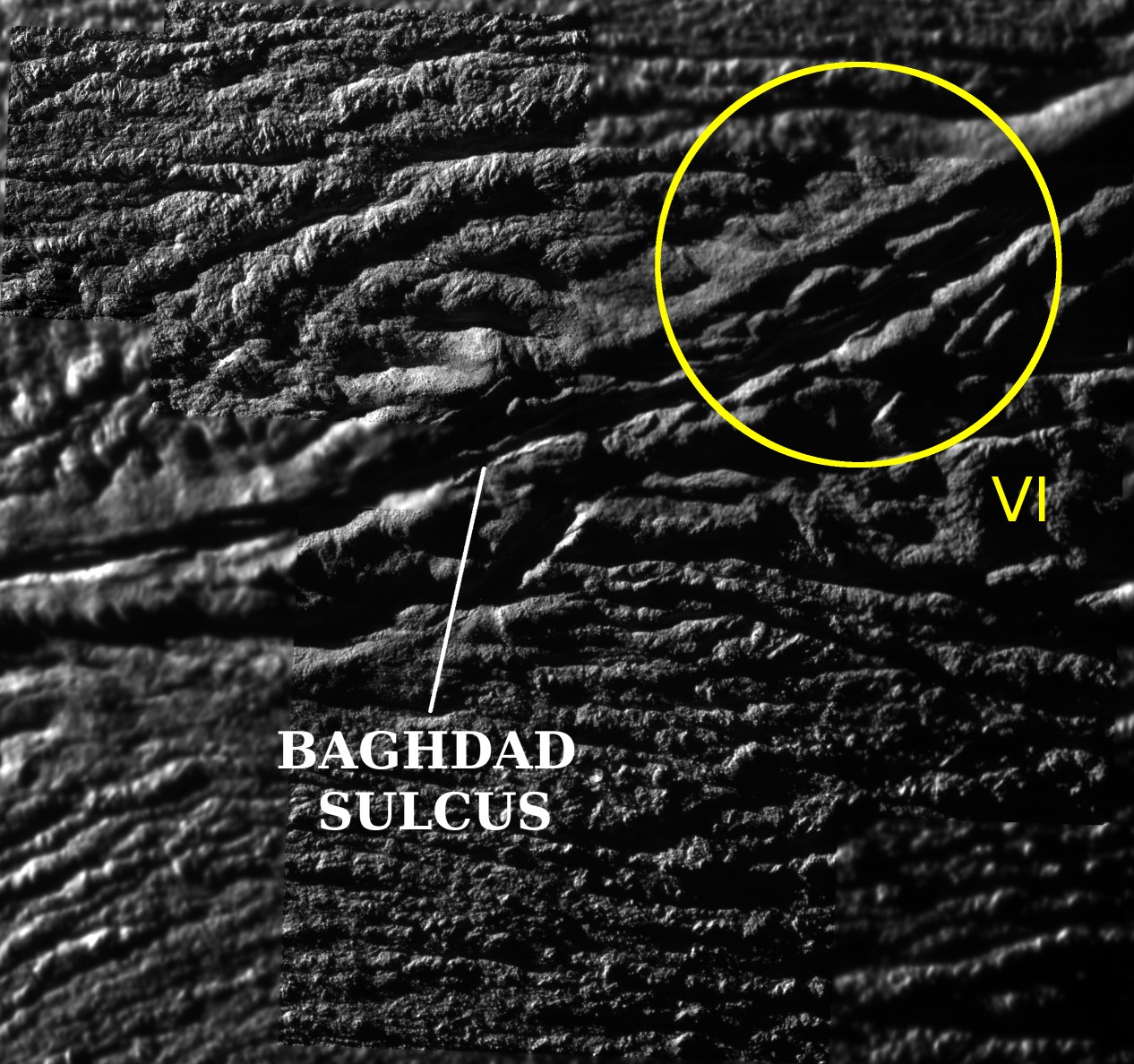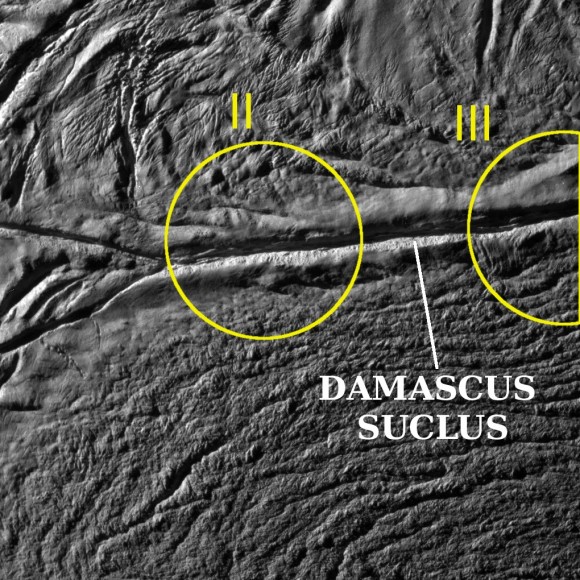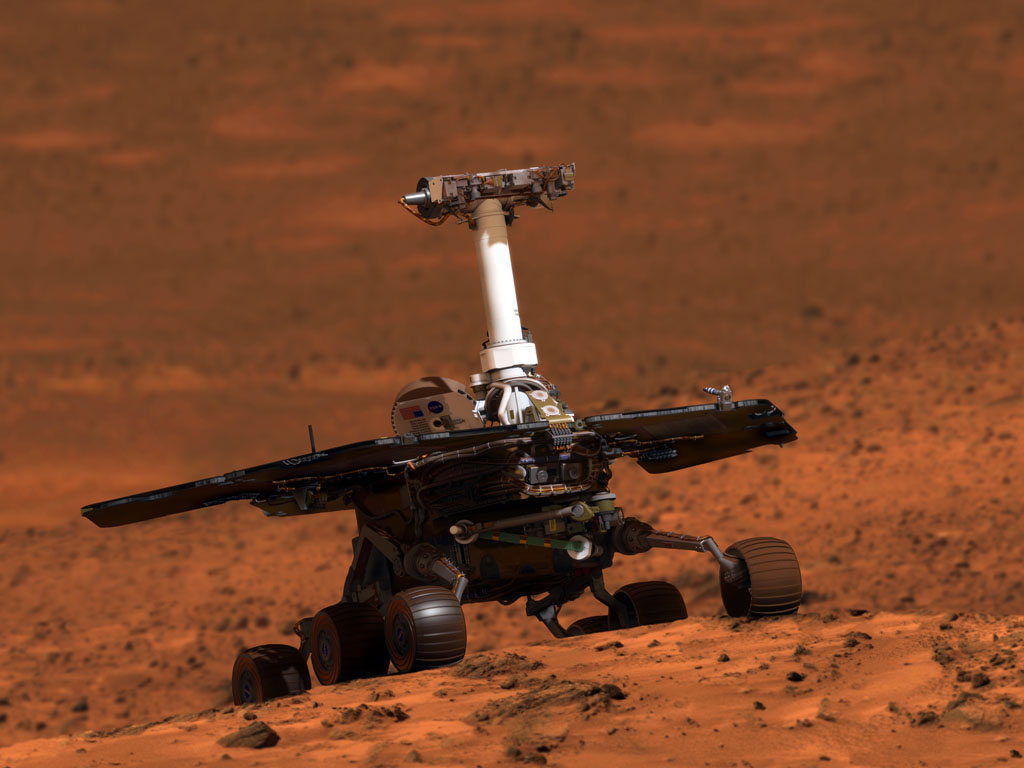[/caption]
In December, the Mars Express spacecraft will celebrate the fifth anniversary of its arrival at Mars. In observation of this milestone the German Aerospace Center DLR has put together a collection of some of the best images from the High-Resolution Stereo Camera (HRSC), the main camera on board the spacecraft. The stunning, high resolution images this instrument has produced of Mars’ surface are nothing short of jaw dropping, and they have provided new perspectives and new discoveries about our neighboring planet. One of the iconic images from Mars Express is the image above of water ice inside a crater near Mars North Pole.
And here’s more from The Best of Mars Express:
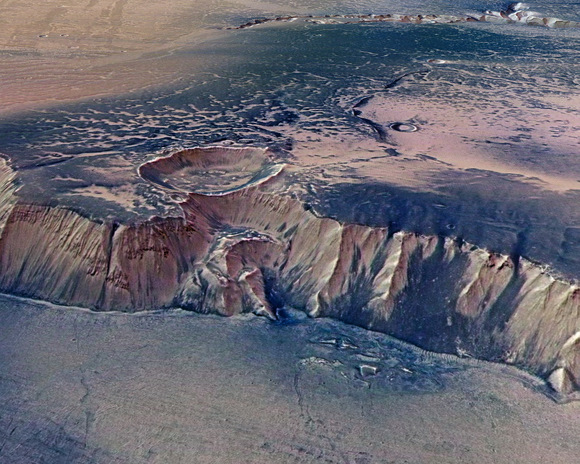
My personal favorite is the image above of Echus Chasma, located in the Lunae Planum high plateau, north of Valles Marineris the ‘Grand Canyon’ of Mars. It doesn’t take much imagination to consider the possibility that once, gigantic water falls may have plunged over these 4,000 meter high cliffs on to the valley floor. See more of Echus Chasma here.
Here’a another of my favorites, this perspective color view of Coprates Chasma and the “Grabenkette” (a chain of depressions or rifts in Mars’ surface) Coprates Catena in an eastern section of Valles Marineris.

The ability of the HRSC to provide “perspective” views — images that are not just straight down camera shots — are what sets the Mars Express mission apart from all the other orbiting spacecraft. When seen in full resolution (please, go download the biggie image here) these 3-D perspective views, are mind blowing!
In March of this year, Ian wrote about these high resolution and 3-D images from Hebes Chasma, one of the deepest canyons on Mars, so see more images there, along with links to additional images and information.

The HRSC is imaging the entire planet in full color, 3-D and with a resolution of about 10 meters. Selected areas will be imaged at two-meter resolution. One of the camera’s greatest strengths is he unprecedented pointing accuracy achieved by combining images at the two different resolutions. Another is its ability for 3-D imaging which reveals the topography of Mars in full color.

Here’s another look at Mars north arctic region, with water ice visible in Chasma Boreale.
Below is a view of Aureum Chaos, located in the eastern part of Valles Marineris. This “chaotic” landscape is dominated by randomly oriented, large-scale mesas and knobs that are heavily eroded. These mesas range from a few kilometres to tens of kilometers wide.

For a little more history on Mars Express, the spacecraft was launched on June 2, 2003 from Baikonur Cosmodrome on a Soyuz-Fregat rocket. The goal of Mars Express is to search for water and the possibility of Martian life. Mars Express is a European Space Agency (ESA) mission to the Red Planet involving a consortium of countries (primarily France, Germany, Great Britain, Ireland, Italy, Japan, the Netherlands, Norway, Russia, Sweden, Spain, and the United States). The mission consisted of the orbiter and the Beagle lander, which unfortunately crash landed on Christmas Day 2003. Mars Express is currently in its second mission extension, which goes until May 2009.

And finally, Mars Express not only takes images the surface of the Red Planet, but also of Mars’ moon Phobos. On July 23 of this year, the spacecraft flew only 93 kilometers from Mars’ moon Phobos, and took the most detailed images ever of the small, irregular moon. Read more about the flyby here.
That’s just a taste of all the wonderful images taken in the last five years by Mars Express. Check out more images at the DLR site.
Source: DLR

